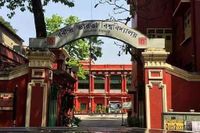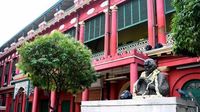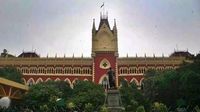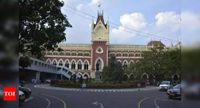The Calcutta High Court has issued a directive concerning the ongoing protests at Rabindra Bharati University (RBU), emphasizing that no outsiders should be allowed on campus grounds. This ruling comes as part of a response to a petition filed by the university's interim Vice-Chancellor, Shubhra Kamal Mukherjee, who sought police protection to safely enter the campus amid escalating tensions. Justice Joy Sengupta, presiding over the case, ordered the deployment of state police personnel at the university's entrance gates to maintain order and ensure the safety of university officials.
On March 27, 2025, the court's ruling specified that peaceful protests by students, faculty, and staff members would be permitted, but any demonstrations by outsiders or dismissed employees should occur at least 100 meters away from the university's perimeters. The High Court's decision followed a series of protests led by members of the Trinamool Congress Chhatra Parishad, who have been vocal against Mukherjee's leadership since March 24, demanding his removal and the appointment of a permanent vice-chancellor.
Justice Sengupta's order was not made in isolation; it was a continuation of the court's previous directives, which had already stated that Mukherjee could not be barred from entering the campus. This was underscored by the fact that he had entered his office on the Jorasanko campus under police escort just a day prior, on March 26, 2025. The interim vice-chancellor, appointed by Governor CV Anand Bose in 2023, has faced criticism from students who accuse him of making arbitrary decisions detrimental to the university's reputation and academic environment.
In response to the protests, Mukherjee expressed his belief that many of the demonstrators were outsiders and did not represent the broader student body. "I think those behind the agitation are mostly outsiders and don’t represent general students," he stated, reflecting the tension between the administration and the protesting factions.
The situation escalated to a point where, according to court documents, some dismissed employees and students allegedly attempted to enter Mukherjee's office with the intention of causing harm. This prompted the court to take decisive action to protect university officials and maintain peace on campus.
During the proceedings, Justice Sengupta highlighted the importance of balancing the right to protest with the need for order. He stated, "It is trite law that everybody has a right to protest, albeit, subject to reasonable restrictions." The court made it clear that while protests are a fundamental right, they must not infringe upon the rights of university officials to conduct their duties. The judge ordered that police maintain a vigilant presence at the university to prevent any disturbances.
Furthermore, the court reiterated that if protesters violated the established norms of peaceful demonstration, law enforcement would be authorized to take appropriate action. This directive aims to ensure that the university can continue its operations without disruption while still allowing for the expression of grievances by students and staff.
The backdrop of this legal intervention is a broader context of unrest within the academic community, as tensions rise over governance and administrative decisions. The protests reflect deeper issues regarding the management of educational institutions in West Bengal, particularly concerning the appointment and authority of vice-chancellors.
As the situation develops, the university community watches closely, aware that the court's ruling could set a precedent for how educational institutions handle protests and administrative conflicts in the future. The balance between maintaining order and respecting the rights of individuals to voice their concerns remains a critical issue in the ongoing discourse surrounding RBU and similar institutions.
In summary, the Calcutta High Court's ruling underscores the complexities of governance in educational settings, where the rights of individuals to protest must be weighed against the necessity of maintaining order and ensuring the safety of all campus members. As the protests continue, the university administration and the student body must navigate these challenges carefully, seeking a resolution that respects both academic integrity and the voices of dissent.




